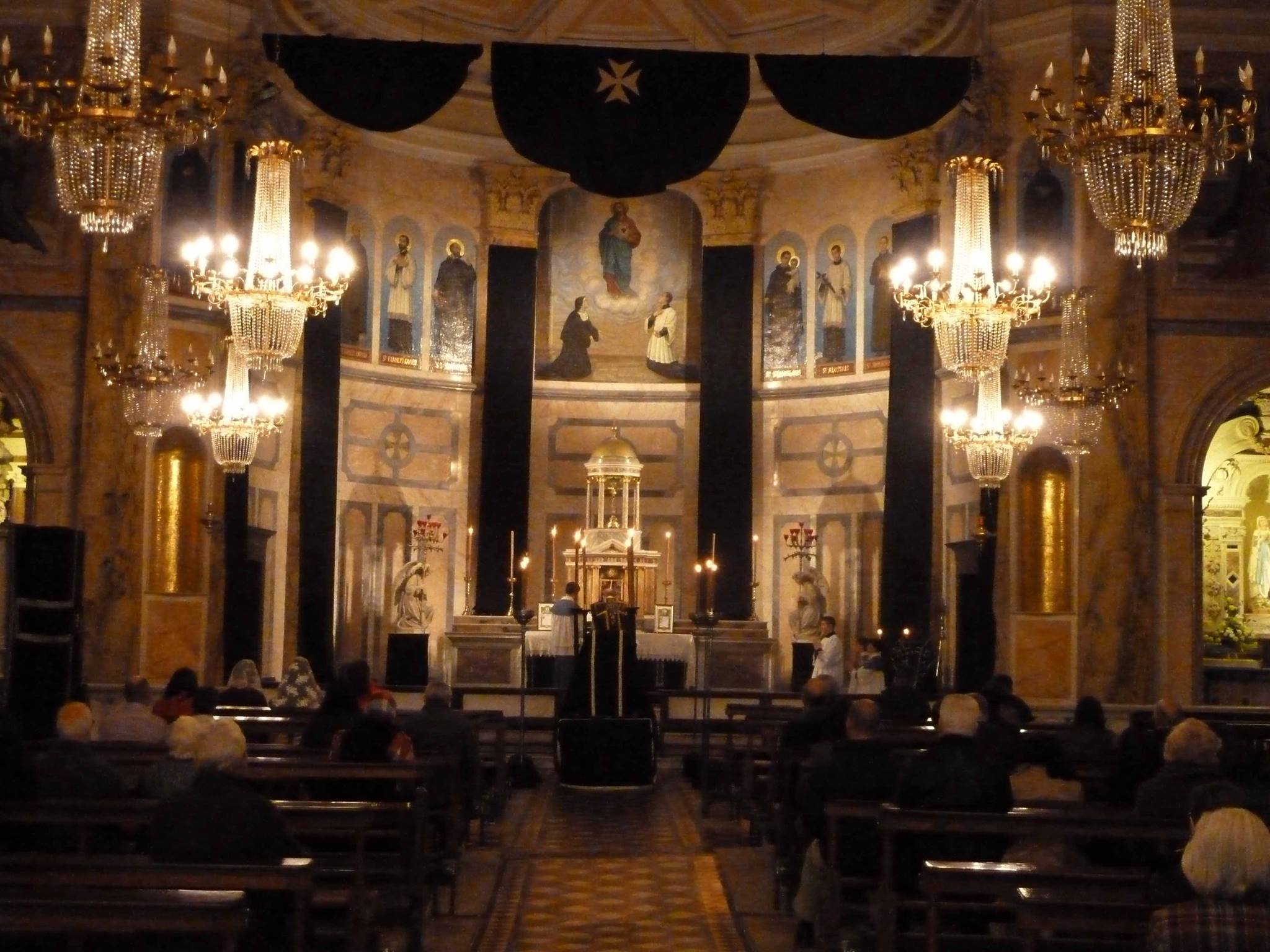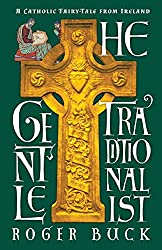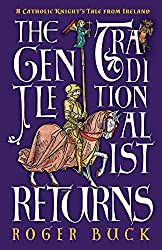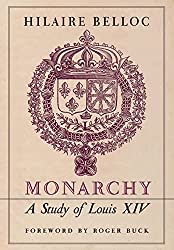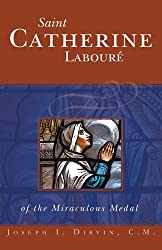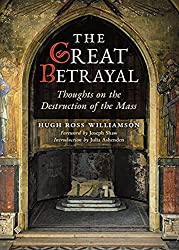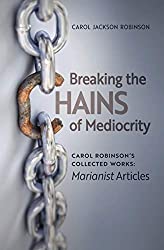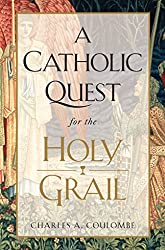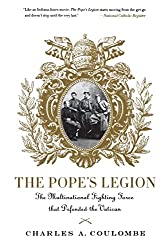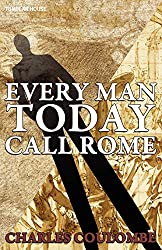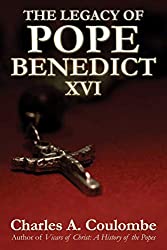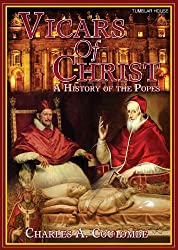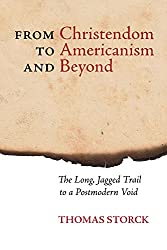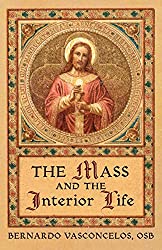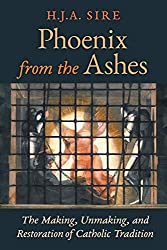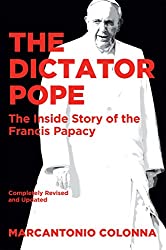by Gary Potter

Introduction (by Roger Buck)
We are pleased to be able to feature this rich, evocative piece by Gary Potter in our archive of Tridentine Catholicism.
Here we publish it with a slight variant of its original title—for we added the words ‘and the Catholic Counter Revolution’ ourselves.
Those additional words speak very much to both this website and our inspiration for publishing this piece.
For as much as we are grateful to Mr Potter for providing the Anglosphere such wonderful insight into Dom Guéranger himself, perhaps we are even more moved by the way he situates Guéranger in his times – that of Nineteenth Century France and the Catholic Counter Revolution.
How conveniently it is forgotten today that once upon a time, vast, vast tracts of France objected to the Revolution!
It was, I think, the majority of the population, given how much women’s voices are forgotten and women in particular were more likely than men to be devout Catholics—and their voices were not heard so much either in the media and certainly not at the ballot box.
In any event, in some places men and women alike objected so much that they took up arms against the Revolution.
Most famously, there was the insurrection of the Vendée – before the Revolutionary government reacted with genocide, killing 300,000 (out of a population of 800,000) according to some estimates and razing entire villages to the ground.

As Potter’s piece makes all-too-clear, France, then, was once very bitterly divided about the Revolution and French Counter-Revolutionary sentiment continued long, long after the 1789 Revolution. Indeed, a brief restoration of the Catholic monarchy took place from 1815 to 1830 – before another revolution in the latter year.
And as much 85 years later in the 1870s – as Potter aludes to – the French democratically elected a monarchist parliament that once more tried to restore the king to the throne.
(Again, this would have been an election without women. The French did not give women the vote till 1945 for the very reason they were more likely to vote for ‘reactionary’ Catholic measures …)
Alas, the will of the people could not be met in the 1870s; the Catholic King in waiting refused the throne – perhaps still in fear of revolutionary uprising. And repression of Catholics commenced once again, as Potter describes.
We perhaps digress too much. Our essential point is that Nineteenth Century France was home to long, intense Catholic Counter Revolutionary movement, which nearly succeeded in restoring Catholic monarchy nearly a century after the King Louis XVI had been executed.
Now, as Potter also makes admirably clear, that Catholic Counter Revolution cannot be separated from much else that characterises Catholic France of the era – including four great Marian Apparitions at the Rue du Bac (in 1830) La Salette (1846) Lourdes (1858) and Pontmain (1871).
All of this worked together to constitute an astonishing Catholic renaissance in Nineteenth Century France – a renaissance centred on His Sacred Heart and a renaissance which in so many ways has inspired this website dedicated to his Sacred Heart.
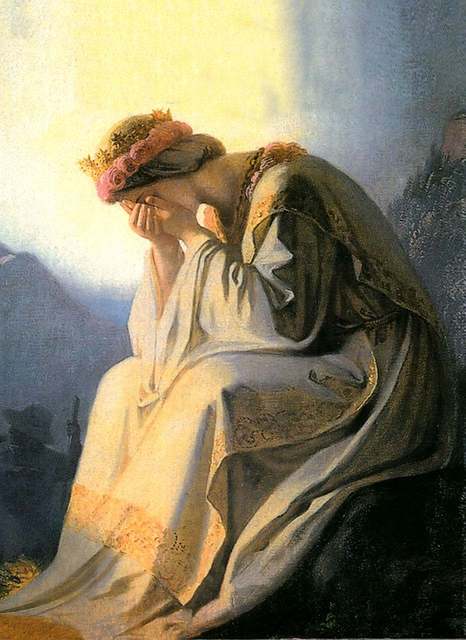
We have much, much about all this at this website. Because the inspiration for this project was born whilst we lived and travelled in the ruins of Catholic France.
So much could be said then. For our whole website revolves on this. But here are just a few related links for the interested reader.
There are pieces about our travels through the Vendée and the wasteland that Catholic France is today.
There is this about how Our Lady appeared at the Rue du Bac weeping for the overthrow of the monarchy and Christendom.
And there is this about the Sacred Heart in Paray-le-Monial and a very personal review regarding the Weeping Virgin of La Salette. And much, much more will be found in our archived posts for Catholic France.
But let us return to Dom Guéranger. He was, as Potter makes clear, an outstanding figure in that astonishing French Counter Revolutionary revival of the Church.
And so we are most grateful for permission to reproduce this this fascinating, important piece which tells us so much about both the man and his times.
Let us just note that as much as we feel indebted to Gary Potter’s wonderful effort here we are not completely in agreement with everything he writes. One significant cut was made, as well as other other very minor ones. You will find more about our (painful) reason for this in an afterword below (which also gives attribution for this piece). Subtitles and formatting changes for greater clarity have also been inserted. Again, more on this below.
But now — after a little promotion to support this apostolate—I turn you over to this really rather wonderful piece from Mr. Potter.
Foreword for Monarchy by Roger Buck
From Gary Potter on Dom Prosper Guéranger
American Catholics who are not students of French history may be aware that at the time of the Revolution of 1789 the Church in France was made to suffer much, but they may also suppose that once the period known as the Terror was over the Church was left in peace.
In fact, that was far from being the case. True, faithful priests and religious were no longer imprisoned, forced into exile or simply butchered, but in 1809, two decades after the Revolution first exploded politically, a French ruler, Napoleon Bonaparte, did not scruple to make a prisoner even of a pope, Pius VII, holding him captive for five years.
As hard as it may be to imagine, worse would come later in the Nineteenth Century. An example of this “worse”: May 24, 1871, when the Archbishop of Paris, Georges Darboy, was stood before a wall and shot down by a Communist firing squad.
The horrors did not end then. At the beginning of the Twentieth Century, during the years 1901-06, religious orders were expelled from France, Catholic schools were closed, and all Church property was confiscated.
Even today the magnificent cathedrals visited by tourists belong to the French state.
(If that fact scandalizes us, and it should, this writer knows of instances, especially in the 60s and 70s, when iconoclastic French pastors anxious to prove their conformity to “the spirit of Vatican II” were kept from stripping their churches bare of everything beautiful and truly religious by mayors who were Marxists, but saw the buildings with their furnishings as historical monuments meriting preservation.)

On the Catholic Counter Revolution in France
If many American Catholics suppose that the Church in France must have been left in peace once the revolutionary Terror of the early 1790s was over, it is probably due to the real intensification in the life of the Faith that took place in the country in the Nineteenth Century and about which they have heard.
That intensification was most notable for a flowering of Marian devotion such as the world had not seen since the High Middle Ages — a flowering marked by apparitions of Our Lady at La Salette, Lourdes, in the Rue du Bac in Paris (where we were given the Miraculous Medal) and elsewhere in France; apparitions which in turn caused still greater devotion to Our Lady.
Another sign of the intensification is less known to most American Catholics. That was the way the Church’s historical teaching on Christ as King of Society — a teaching at the heart of her traditional social doctrine — was taught in Nineteenth-Century France with greater effect than perhaps anywhere else at anytime before.
That is, if it is measured against the forces militating against the teaching having any effect at all — forces symbolized by the firing squad that murdered Archbishop Darboy.
A measure of the effect: Between, say, 1873 and 1875, or very soon after the archbishop was killed, there was scarcely a political commentator anywhere in Europe who did not expect the very anti-liberal Bourbon monarchy to be restored in France.
The forces of organized naturalism would soon enough regain the upper hand, but, for the time being, anti-revolutionary feelings ran so high that the French parliament approved construction in Paris — as a public utility! — of the Basilica of the Sacred Heart (Sacre Coeur) in expiation for the Revolution and the sin of liberalism.
Another measure: A heresy that first arose in France, one that proposed democracy as a political model for the governance even of the Church, could not take root in its native country. It had to find the right soil elsewhere, which is to speak of a land where the teaching on Christ as King of Society was practically never taught, and so became known as Americanism.
The teaching as it was taught in Nineteenth-Century France is treated in an upcoming book by this writer, The Social Reign of Christ the King. The present essay has another subject, the life and achievements of a particular individual, but the life and all that the individual did (especially all he did) need to be seen in historical context to be fully appreciated. That is what we are doing now — providing context.
Here is another part of it. Apparitions are wonderful, they are inspiring, but when the life of the Faith is intensified in this world, it is owed to the actions of men. Our Lord did say, “Without Me you can do nothing,” but without men to cooperate with Him, even apparitions will not become known.
Nineteenth-Century France, despite the troubles that beset the Church (some might say, because of them), was very rich in apostles. They included many canonised saints.
Among the canonised French saints of that century were: St. Peter Julian Eymard, St. Catherine Laboure, St. Bernadette Soubirous, St. Theophane Venard, St. Peter Mary Chanel, St. John Vianney (the Cure d’Ars), St. Thérèse of Lisieux (the Little Flower).
However, if the Church relied on no one but her canonized saints to defend and advance her interests and those of the Christian social order, she would hardly be herself, and Christendom would never have existed.
So, the history of the Faith and of the world is replete with the names of rulers, statesmen, soldiers, clerics, historians, artists of all kinds and others who may not have been canonized but have contributed mightily to the defense of Catholicism and spread of Catholic culture.
Such men and women, both laypersons and religious, abounded in Nineteenth-Century France.
That should not be forgotten here even if the essay has only one such individual as its subject. This individual could not have achieved what he did had he been entirely alone, entirely without the moral and practical support of others who believed as did he.
Early Life of Prosper Guéranger

We are speaking of Dom Prosper Guéranger. Some of his achievements: He authored the greatest and most complete work on the liturgy of the Church ever written.
Directly and indirectly he helped assure definition of the two great dogmas that were defined in the Nineteenth Century, that of the Immaculate Conception and that of papal infallibility.
After championing for decades the substitution of the Roman liturgy for the hodge-podge of local rites that existed in France — the legacy of too many years of rampant Gallicanism — he saw his desire fulfilled before leaving this world in 1875.
Above all, he presided over the rebirth of French monasticism, and, through it — even if he did not live to see the further development — the rebirth of religious life elsewhere.
This last achievement can be seen as it ought only if it is recalled that less than fifteen years before his birth in 1805 the practice of the Faith had been made illegal in France by a revolutionary government.
(The government set up a legal “Constitutional” Church of its own, something like the so-called Patriotic Church that exists in Communist China today.)
The government’s action entailed the closure of every monastery in the country — not that there were many left by the time of the Revolution.
Truth to tell, monasticism had been in decline for decades, and not simply in France.

Here is an index of the decline: At the middle of the Eighteenth Century [i.e. – forty years before the Revolution – RB] there were perhaps 1,500 Benedictine abbeys throughout Europe.
By the time Dom Guéranger began his work there were no more than 30. The intellectual climate generated by the Enlightenment accounts for this development in part.
Another important factor, however, was the practice of In commendam. This was the practice whereby men who were not monks were appointed abbots of monasteries so that they might collect the monasteries’ revenues. Not merely did this deprive the houses of income. Religious observance also inevitably became lax, often to the point of scandal, when a community was headed by an absentee abbot.
In France, the actual law nullifying monastic vows was voted by the revolutionary Constituent Assembly in February, 1790. It was followed in August, 1792, by a decree that simply ordered the closure of the remaining religious houses.
When Napoleon extended the sway of the Revolution beyond the borders of France by means of his military conquests, monastic life became all but extinct in much of Europe, first in the Low Countries (Belgium, the Netherlands) in 1796, then in Italy between 1807 and 1811, in Spain in 1808 and, finally, in the Papal States themselves in 1809.
It was in the midst of this disaster that Dom Guéranger was born in 1805. That was in Sable, a town near Le Mans in western France. Very little is known of his boyhood and youth apart from what he relates in an incomplete autobiography.
His father, Pierre, was a schoolmaster. His mother, born Francoise Jary, was a seamstress. When the couple wed in 1798, their marriage had to be blessed in secret by a priest who had recently returned to France from exile in the Isle of Jersey and was functioning, like all the non-Constitutional priests in the country at the time, in an underground way.
Similarly, if the situation of the Church was sufficiently improved by 1805 that the new-born infant Prosper-Louis-Pascal Guéranger could be baptized in a church — Napoleon had concluded a Concordat with Rome in 1802 that supposedly “guaranteed” the freedom to worship — the sacrament was administered by a priest who had been imprisoned for the Faith a scant 13 years before.
Prosper was one of four children, all sons, born to the Guéranger family. From what he relates in his Memoires , not a great deal of detail can be gleaned about the family, especially the parents. For instance, there is no physical description of the mother, but she seems to have been a happy woman.
By contrast, a picture emerges of Pierre, the father, as serious, stern, even dour. That he was serious in his Catholicism is absolutely clear. We know from the son that he read to his family the life of the saint of the day every evening. Further, he had been willing to risk giving shelter to priests prior to Napoleon’s Concordat with the Holy See.
Beyond that, the little school he ran was described in a report by the local police as a “fruit of fanaticism” — i.e., it was thoroughly Catholic.
Perhaps most significantly, when Napoleon made a prisoner of Pope Pius VII, Pierre Guéranger shielded his children from the news.
The family continued to pray together for the pope as if nothing had happened, and Prosper would later remember an engraving in the home, one that was venerated by the family and that showed Pius VII kneeling at the feet of Our Lady of Sorrows. When the boy was seven and accidentally heard of the pope’s captivity, he was distraught.
No boy of seven, however precocious, could possibly fully understand all the ramifications of anything as calamitous as the captivity of a pope — calamitous even if the place of confinement is a great chateau — but he could feel the outrage of it, and the outrage would reinforce in Prosper the attachment to the head of the Church on earth first formed in the youngster by the teaching and example of his father.
Prosper Guéranger might have remained faithful to the Church all his life in ordinary circumstances. In the circumstances that actually prevailed — from the captivity of Pius VII when he was four to the murder of Archbishop Darboy four years before his death — his fidelity, and that of countless other Frenchmen, became heroic.
(It is one of modern history’s neater ironies that the place of Pius VII’s confinement, the chateau of Fontainebleau, is where Napoleon was obliged, not long afterward, to sign the instrument of his abdication.)
Foreword for Monarchy by Roger Buck
Under Napoleon

It is not within the scope of this essay to tell the story of the life and career of Napoleon, but his confinement of Pius VII did have a lasting effect on Prosper Guéranger and some readers may be asking why it took place. To understand, two points need to be grasped.
The first: When the life of a society is totally disrupted by an event like the French Revolution, a power vacuum tends to result. The vacuum is often filled by a man who arises from nowhere and of whom no one has heard until his rise. Hitler is an example.
Napoleon was prototypical.
An unknown artillery officer when the Revolution began, he rose to the rank of general by the age of 26, led successful military campaigns in Italy, Egypt and elsewhere, and then used those successes to leverage himself into the position of first-among-equals in a revolutionary government called the Consulate, a sort of presidency-by-committee.
Each successful stage in his rise further fed an ambition that must have been limitless from the beginning.
This ambition finally reached such a height that Napoleon decided, when First Consul, to declare himself Emperor.
There was great significance in that. Later in the century, another, the King of Prussia, would also usurp the title, but until Napoleon, no ruler in Western Europe was styled Emperor except the Emperor — the ruler of the Holy Roman Empire.
There still was such a real Emperor at the beginning of the nineteenth century, and he was the legitimate successor of Charlemagne.
Seeing himself as the true successor of Charlemagne, Napoleon, who would force the dissolution of the rival Holy Roman Empire in 1806, determined that he ought to be crowned by the pope, Pius VII, as Charlemagne had been by St. Leo III in 800.
Accordingly, by means that do not interest us here, Napoleon compelled Pius to come to Paris for a coronation at Notre Dame Cathedral.

However, unlike Charlemagne, Napoleon, full of pride, had the temerity to take the crown from the pope’s hands and place it on his own head. The gesture — it amounted to saying that no power whatsoever was greater than himself — was a sign of what was to come.
The second point: As long as there were Holy Roman Emperors, they and the popes served as co-governors, so to speak, of Christendom — co-governors, but with different functions.
The Emperor ran things administratively. His was the hand that was on the actual helm of the ship of state. The pope’s function was to serve as look-out. He was up in the crow’s nest, ready to cry out a warning if he saw the ship of state headed for a reef.
That is the way things were supposed to work, and did most of the time. Unfortunately, during the course of history there were certain Emperors who wished to do the impossible: stay at the helm and serve as look-out.
Naturally this caused conflict between them and the pope of the day, and in one instance a council of the Church was actually convened (the First Council of Lyons in 1245) for the purpose of deposing an over-reaching Emperor, Frederick II.
Napoleon, the very embodiment of the Revolution, intended from the outset to be his own look-out as well as helmsman. How could it be otherwise? Even the mighty Alexander (the one called the Great) had the worldly advantage of being born a prince.
He, Napoleon, owed his position to no one and nothing except his own genius and audacity. He had no equal in all history!
This was his thinking, and not his alone. His contemporary, the philosopher Hegel, saw him as a “world-historical individual” in whom was centered the movement of history and who transcended law and morality.
Another contemporary, the poet Goethe, wrote of him as being the instrument of the salvation of European civilization.
Much of the world hailed him as a “man of destiny” — no, the man of destiny. This became his conception of himself, if it was not always so.
There seemed every reason for him to be so regarded. All of Europe, after all, not simply France, lay at his feet in a matter of three or four years. Some ancient thrones he simply kicked over.

He drove the legitimate occupants from others and installed in their place one or another of his brothers, some other relative or a subaltern. England (on the other side of the Channel) and Russia (which was a world unto itself) lay outside his control.
Not including European Russia, all of Continental Europe was his, except for one important little spot: Rome and the Papal States.
Putting the matter another way: Apart from the King of England and the Tsar, only one ruler (and he was still a temporal ruler in those days) was not subservient to him. That was the Pope.
So Napoleon set out to bring Pius under his control. He would do this, he decided, by moving the capital of Christianity from Rome to Paris, the new capital of all Europe, the capital of the Empire.
Of course, once installed in Paris, the pope would be under the Emperor’s thumb. That was the object.
By way of preparation, millions were spent transforming the archepiscopal palace in Paris into a papal residence. The Vatican archives were also moved to Paris.
Napoleon’s only problem was that Pius VII absolutely would not cooperate with the project. Napoleon tried by every means he could devise to force the pope to do his will.
At one point he summoned a “council” of French and Italian bishops to ratify him, in effect, as the head of the Church. That did not work. At another point he stripped eight cardinals of their rank and banished them to distant villages because they would not drop their support of the pope.
Pius, all the time, kept finding his own means to resist. Finally, Napoleon ordered his arrest and removal, first, to another location in Italy, and then to Fontainebleau. Meantime, he proclaimed his infant son King of Rome.
After the pope was brought to Fontainebleau, he and Napoleon met there only once, but the session lasted for days. It was strictly man to man. Aides were not present. Historians have conjectured as to what exactly transpired between the men, and novelists and playwrights have tried to imagine it, but to this day we do not know what was really said that week, and probably never shall.
When it was all over, Pius did tell attendants that at no time did Napoleon threaten physical violence, or much less attempt it.
Later, as his empire started to crash down around him, Napoleon ordered that the pope be taken to the south of France and then, faced with the hopelessness of his own situation, sent word to let His Holiness make his way freely back to Italy.
One more thing must be said of Napoleon and his relations with Pius VII before we return to this essay’s real subject. For obvious reasons, the pope was obliged to excommunicate the Emperor. That was even before Napoleon made him a prisoner.
Eventually, when the ex-Emperor was in exile on the tiny island of St. Helena in the remote South Atlantic, he remembered that he had been born a Catholic. By God’s grace, he died one. That was after he sent an appeal to Pope Pius, beseeching him to send a chaplain to St. Helena. Pius did not hesitate to do so.
Joseph de Maistre and the Young Guéranger

It is proverbial among Protestants — at least it used to be when many more Americans than today still lived in small towns where everybody knew everybody else — that the worst-behaved kids, the ones that caused the most trouble, would be the preacher’s.
Doubtless there were exceptions, but it was true often enough to remind us that merely because parents raise their children in the hope they will turn out a certain way does not mean they will.
Prosper Guéranger could have wound up like the preacher’s kid. It did not necessarily follow that he would become studious and devout simply because his father intended that, but it was so.
Yet, he did not completely fit the template set by his father. No one would ever describe him as dour. He always had his lighter side. He loved to laugh. One supposes he might have got that from his mother. Then again, neither parent may have had anything to do with it. Benedictine monks are famous for their smiling faces.
One thing about which his parents could do nothing was their son’s physical constitution. Besides being small in stature, he was never robust.
This is in contrast to his second successor as abbot of Solesmes and principal biographer, Dom Paul Delatte. The latter was a big man who radiated physical strength. He is mentioned here due to his being the principal biographer of Dom Guéranger.
There is a biography that has been translated into English, Solesmes and Dom Guéranger, by Dom Louis Soltner, but it was written in 1974 and its contents show it.
Readers who can handle French and wish to know more about Dom Guéranger and his time than can be learned from the present essay ought to go to Dom Delatte’s biography, Dom Guéranger, Abbe de Solesmes. First published in 1909, it was written in the light of Vatican I rather than in the aftermath of Vatican II.
It is so complete at 898 pages that we can learn from it, for instance, exactly which books Prosper Guéranger was reading at age 17.
It was just then that he was finishing at the College Royal in Angers, a school (the equivalent of a high school) that he had entered as a scholarship student in 1818. (Napoleon was gone from the scene. Louis XVIII, a brother of the martyred Louis XVI, now reigned as king during a period known as the Restoration.)
Having become an avid reader as soon as he learned to read at all — his father saw to it that this was as soon as possible — young Prosper had already mastered Francois Rene Chateaubriand’s two great books, Le Genie du christianisme and Les Martyrs.
Now, at 17, he discovered Les Soirees de Saint-Petersbourg, Considerations sur la France, and, above all, Le Pape, all works by Joseph de Maistre, veritable father of the Catholic Counter-revolution.
These set the boy to thinking on the exoteric character of the Faith — i.e. the fact everyone knows that Our Lord commanded His followers to take over the world (‘baptize all nations’), the accomplishment of which mission, even when incomplete, is bound to have political and social consequences. Dom Guéranger would later write of the author of these books that he was ‘the greatest genius of recent times.’
It does not mean the teenage Guéranger read no one else. Even as he got de Maistre under his belt, he also read de Bonald, especially La Legislation primitive, which gave him a good idea of how the law operates in society, or should operate.
Foreword for Monarchy by Roger Buck
For the Cause of Ultramontanism

Still, of all these and the other books he was reading, Le Pape (The Pope ) is the one that would mean the most to him.
Therein he learned of the role the papacy has played not simply in relation to the religion, but in history …
De Maistre’s notion of the papacy as being not simply the guarantor of truth in the Catholic religion but also the bedrock of Christian civilization was the foundation of that expression of the Faith which had its political dimension as well as purely religious significance and was called “ultramontanism.”
(The term literally refers to “over the mountains,” specifically the French Alps. This referred geographically to Rome, and theologically to non-French rule of the Church in France, i.e., the papacy. It was the very opposite of nationalistic Gallicanism.)
A deep fervor for the papacy was roused in Prosper Guéranger by the outrage of the capitivity of Pius VII.
When that fervor became fused with de Maistre’s notion of ultra-montanism, it produced one of the Nineteenth Century’s foremost champions of the yet undefined dogma of papal infallibility.
It also eventually resulted in a book to set alongside Le Pape, Dom Guéranger’s own La Monarchie pontificale (The Pontifical Monarchy). But that lay in the future.
The young man had believed even before beginning his studies in Angers that God was calling him to the priesthood. By the autumn of 1822, he was sure of it. That is when he entered the diocesan seminary of Le Mans.
It is a good thing he was sure of his vocation. Without that certainty, he might not have persevered. Nearly half the seventy young men who entered the seminary with him that year soon dropped out.
In another era, more might have stayed, but the circumstances of the moment worked against them. The circumstances were not unlike those of today. It was the Revolution that gave rise to them then.
For these past 35 years, it has been the aftermath of Vatican II.
The results have been very similar. Dom Guéranger described them in his Memoires when he wrote of being exposed to
absolutely no course in ecclesiastical history, liturgy, or canon law, absolutely no mystic or ascetic theology, and, in the seminary, very little godliness.
There is a lesson to be learned from those couple of lines from the Memoires, as also from the state of seminary education today — where seminaries still exist.
It is that centuries may be needed for the development and perfection of something like the best methods for the right formation of sound priests, but whether by a political revolution as two centuries ago in France or the kind of self-demolition set in motion by Vatican II’s “reforms,” it can all be undone in a single generation.
Unquestionably, it was his private studies, apart from his conviction that he was called, that saved Prosper Guéranger’s vocation. Especially valuable were the periods of summer vacation when he would immure himself in the seminary library.
“This is when I began to know books,” he wrote in his Memoires. “I experienced an unparalleled happiness when I finally studied them in-folio. These publications of the Fathers of the Church ravished me… the historians, the hagiographers, and, above all, the Society of the Bollandists. It all left a profound impression on me.”
So, too, did his experience of December 8, 1823. December 8 is the Feast of the Immaculate Conception, of course, but it needs to be recalled that the mystery was not yet defined dogmatically.
Nor had Prosper Guéranger understood its relationship to the Incarnation, not until his meditation on it that day.
Suddenly, it became clear there in the seminary chapel. There was
No transport whatsoever, but a sweet peace with a sincere conviction…. It was one nature disappearing to make way for another.
When Prosper Guéranger left the seminary in 1826 at the age of 21, he took a position as secretary to the Bishop of Le Mans, Claude-Madeleine de la Myre-Mory, a 72-year-old prelate who had spent the years between the outbreak of the Revolution and Napoleon’s advent exiled in Italy and Austria.
He recognized in the young subdeacon qualities that could carry him far, and which he was pleased to encourage: quick intelligence, alertness, sharp powers of observation.
During his period in the bishop’s service, Prosper Guéranger, whose whole universe had lately consisted almost entirely of books, learned something of men and the ways of this world — lessons that soon enough would prove quite valuable.
He became a deacon in November, 1826, and preached his first sermon. It went badly, as would a few more that followed. He never became truly eloquent in the pulpit, but did in time develop a style that would at least approximate that of his writing: clear, direct, full of vigor. “Clear” and “direct” are two adjectives that are always used in the description of the kind of writing in French that is called “classical.”
A Priest in Turbulent Times

October 7, 1827, was the date of his ordination. It took place at the archepiscopal palace in Tours. The last legitimate King of France, Charles X, the youngest brother of Louis XVI, was monarch at the time.
For his enthronement, Charles had insisted on a full-scale coronation, and his insistence was disturbing to many. The “many” believed the ancient and extremely elaborate rite ought to have been simplified and abbreviated so it would be “in keeping with the times.”
It tells us much about the condition of the post-revolutionary Church in France that even under a monarch like Charles, the ordination of Prosper Guéranger would be conducted as it was.
It was without any liturgical solemnity. Until the young man being ordained pointed it out, the officiating bishop even forgot to lay hands on him! (We said a few paragraphs ago that it takes only a generation for things to fall apart.)
That afternoon the new priest went for a solitary walk to the nearby Abbey of Marmoutiers, a monastery founded by St. Martin of Tours. It had been reduced to ruins, like so many others, by a revolutionary mob.
Leaving, he met an old woman who haunted the place and the two of them talked.
The old woman had witnessed the sack of the monastery and she described it, especially the shattering of the stained-glass windows of the choir.
The encounter in the ruins, following as it did the barrenness of the ordination ceremony earlier in the day, gives us a picture of the desolation of the Church in France at that time.
Yet, not long afterward, Bishop de la Myre would grant Fr. Guéranger permission to use the Roman Missal and breviary, a privilege that perhaps was not enjoyed by any other priest in the Diocese of Le Mans.
Rome’s liturgical books enabled him, he tells us, to “enter ever more deeply into the inmost consciousness of the Church.”
More importantly, after two years of praying with the texts, Fr. Guéranger was ready to write a series of papers that eventually would become the basis, more than any other single thing, for the suppression of local rites and reestablishment of liturgical unity in France.
By the time the papers were written, Bishop de la Myre had resigned from the see of Le Mans because of age and ill-health and moved to Paris. Fr. Guéranger followed him.
He never cared for life in the capital, but Fr. Guéranger’s time there did allow him to make acquaintances that would be helpful in the future. When Bishop de la Myre died in September, 1829, the priest obtained the post of administrator in the parish of the famous Missions Etrangeres, an undemanding job that left him the leisure to begin writing as well as continue his private studies.
He did also preside over the occasional ceremony. In his Memoires, he writes of one in particular. King Charles was present.
When it came time for the singing of the Domine, salvum fac regem (Lord, Save the King), His Majesty joined in. Less than two months later, Charles X was toppled from his throne by the newest wave of the Revolution.
He was replaced by Louis-Philippe I, the head of the House of Orleans whose Masonic father had voted in the Constituent Assembly for the execution of his cousin, Louis XVI.
The new monarchy being liberal, Louis-Philippe was not styled King of France, but King of the French.
An American today might suppose that inasmuch as Louis-Philippe reigned as a monarch, the Church did not suffer under the new dispensation. If so, it needs to be underlined that this monarchy was liberal. This was to the point that Church authorities deemed it expedient for all priests to lay aside their cassocks and dress as laymen. Otherwise they might be attacked in the street.
Charles X had been overthrown in July, 1830. Fr. Guéranger returned to Le Mans that autumn. The new bishop, Philippe-Marie Guy Carron, was perfectly agreeable to his continuing to concentrate on his private studies and his writing. Apart from preaching the occasional homily at the cathedral, that is what he did. His intention was to produce at that time a book on the papacy, a project that would eventually be realized with the publication of La Monarchie pontificale.

For now, however, he was diverted by the problems that beset the Church with the advent of Louis-Philippe’s liberal monarchy, not the least of which was that under the terms of the 1802 Concordat, bishops were selected by the head of state.
Such a system might work well enough when Catholicism was the religion of the state and the chief of that state was such as Charles X. It was another matter when power was in the hands of a heretic, like Napoleon, or an agnostic, like Louis-Philippe.
Fr. Guéranger wrote a treatise on the subject, On the Election and Nomination of Bishops, that was published in June, 1831. This was merely the first of very many times when, due to some burning question of the day, Dom Guéranger’s gifts as a polemicist required that he set aside his scholarly or literary writing in order to defend the Church’s interests in the public arena.
Such urgent interruptions of his scholarly routine would go on for the rest of his life. As a result, certain intended projects were not begun, and he left more works incomplete than were finished in his lifetime. Even his masterpiece, The Liturgical Year, was incomplete when he died.
Once again a parallel to our own time can be seen. During the past 35 years the present writer has been acquainted with numerous authors capable of more substantial work than that for which they are best known. These are writers from whom we shall never have the books they could have produced because the more-or-less permanent emergency situation of the Church during these decades has kept them busy countering scandal and heresy in the columns of newspapers and magazines.
Foreword for Monarchy by Roger Buck
Guéranger, Monasticism and Solesmes
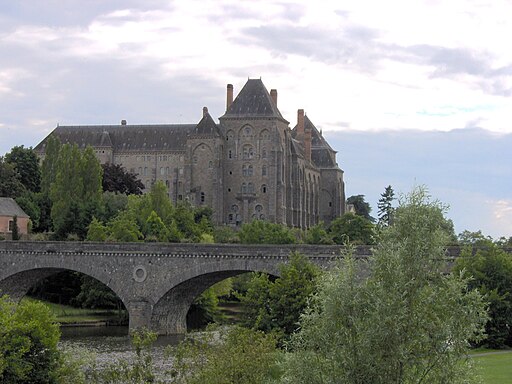
It was while still a seminarian that Prosper Guéranger first read about monasticism and especially the Benedictine tradition — and that which is its underpinning, the Rule of St. Benedict. His reading made him aware of a way of life to which he felt an immediate attraction.
Of course that way of life was abstract to him. There was no living example of it anywhere in France at the time.
However deep his attraction to it, there was no place he could go to see if it was really for him, so he put aside his thoughts of it.
Now, however, in the spring of 1831, a notice began to appear in the newspapers of Le Mans. Today we would call it a “want ad.” What it advertised was the sale of the former Priory of Solesmes, a property but a few miles from Fr. Guéranger’s hometown of Sable, one that had been used since the Revolution as a warehouse, a glassworks, and for other purposes.
It was a small miracle that it still existed at all. All over France, many such properties — former monasteries and convents — had disappeared. They had been used by purchasers as instant quarries — sources of building stone easier to get at than hewing it from the earth.
The availability of the old priory set Fr. Guéranger to thinking. More precisely, he remembered the attraction he had felt as a seminarian for a vanished way of life. He wrote of this in his Memoires .
As the announcement about Solesmes continued to appear in the newspapers, I could not tear my mind away from the thought of that house being saved and utilized. All of a sudden, near the month of June, the idea came to me that if I could gather several young priests, we could reestablish there the Order of Saint Benedict, with the divine office and studies. My duties to the bishop and my stay in Paris had suspended aspirations I had had in the seminary. They suddenly sprang to life again, and have never since left me.
We need to remember this was 1831. The liberal monarchy of Louis-Philippe was less than a year old. One of its first actions had been to crush the effort to revive a Trappist monastery in the Diocese of Nantes. (The monks were dispersed and the abbot thrown into prison.) Fr. Guéranger’s “aspirations” seemed pure folly in the circumstances.
Still, as he would write in another passage of his incomplete autobiography:
My youth, the complete lack of temporal resources, and the limited reliability of those with whom I hoped to associate — none of these things stopped me. I would not have dreamed of it; I felt myself pushed to proceed. I prayed with all my heart for the help of God; but it never occurred to me to ask His will concerning the projected work.
That last statement may surprise us, but Dom Guéranger explains:
The need of the Church seemed to me so urgent, the ideas about true Christianity so falsified and so compromised in the lay and ecclesiastical worlds, that I felt nothing but an urgency to found some kind of center wherein to recollect and revive pure traditions.
(It should not be necessary to spell out to the reader another parallel between the situation of the Church in Nineteenth-Century France and developments in our day, including the foundation of several new religious orders dedicated to preserving Tradition.)
Fr. Guéranger’s decision to reestablish the Order of St. Benedict in France and to found a Benedictine monastery will seem absolutely amazing to us if we reflect on it to the slightest degree.
Here was a young priest who had never been a monk, had no existing model of Benedictine community life to guide him, had no one with first-hand knowledge whom he could consult, and yet he proposed to revive monasticism virtually single-handedly!
Yes, there were still some old men around who had been monks before the Revolution. Some of them would even seek admission to Solesmes once it was got going.
We need to remember, however, that the only community life they knew was that of the decadent monasteries of the Eighteenth Century. This made them useless as advisers and impossible as candidates for Solesmes. Fr. Guéranger, after all, was aiming to establish a “center wherein to recollect and revive pure traditions.”
To do so, he first obtained the approval of Bishop Carron. It was not immediate, but was eventually given. Besides the approval of His Excellency, something else was needed: money.
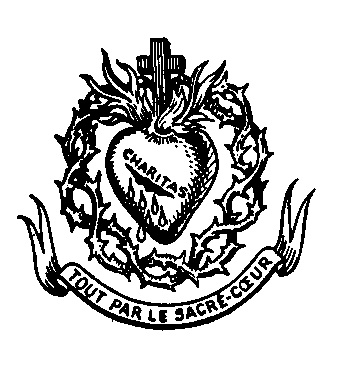
In this regard it was doubtless pleasing to Heaven that Fr. Guéranger decided to consecrate the reestablishment of the Benedictine Order in France to the Sacred Heart of Jesus.
However, the present owners of the old priory in Solesmes would still expect to be paid for the property. It was now when he set about raising funds that the time Fr. Guéranger had spent in Paris with Bishop de la Myre and in the parish of the Missions Etrangeres, and the acquaintances he made then, proved of value. So did unexpected help.
One bit of that was a letter from Chateaubriand in which the great writer and sometime political figure pledged 40 francs to the project. The letter was of help because no Catholic author of the first half of the nineteenth century in France was better known or more admired than Chateaubriand.
It also helped the project that Madame Swetchine got behind it. Readers who are unfamiliar with the story of this remarkable woman need only know that she was a convert from Russian Orthodoxy, that she settled in Paris after her conversion, and that through her salon, which was frequented by all the leading Catholics of the period, she became if not a dominating influence at least a formidable presence in the life of the Church in France and all Western Europe.
She it was who eventually set into operation for Fr. Guéranger “The Work of St. Benedict,” a charity designed to sustain the monks of Solesmes through annual dues of five francs.
The upshot of the fund-raising activity was that a lease for the priory was signed on December 14, 1832. The following July 11, four other priests joined with Fr. Guéranger to form the nucleus of the planned monastic community.
Fr. Guéranger also was pulling what strings he could to advance the cause of Solesmes in Rome.
His efforts in that direction were rewarded on September 1, 1837, when Pope Gregory XVI elevated the priory of Solesmes to the status of abbey, designated it the motherhouse of the “French Congregation of the Order of Saint Benedict,” and on October 31 named Dom Guéranger Abbot of Solesmes and Superior General of the Benedictines of the “Congregation of France.”
If Gregory XVI proved so sympathetic to the cause of Solesmes as to make it an abbey a mere four years after the first five priests moved into the premises, it ought to be observed that he was himself a monk (a Camodolese).
He was also the author of Mirari vos (issued on August 15, 1832), the first of a long series of anti-liberal papal encyclicals, a series that would continue right into the lifetime of countless Catholics still living.
This is to say, on the one hand, that Gregory was bound to understand the importance of having a prayer center like Solesmes in France. On the other, insofar as Dom Guéranger conceived Solesmes as a ‘center wherein to recollect and revive pure traditions’ the pope of Mirari vos was certain to be supportive.
So would be his successor, Bl. Pope Pius IX. So would be still other personages. And, as was said early in this article, Dom Guéranger could not have accomplished all he did had he been entirely alone.
Especially, we can say Solesmes would never have flourished if nothing else of consequence to the Faith had been taking place in France at or around the time the first five priests began their life together — their life under the Rule of St. Benedict — at the old priory in 1833. Let us consider some of what was going on.
There had been the publication a few months earlier of Mirari vos , the encyclical mentioned above. If it condemned liberalism, it also signaled support at the highest level of the Church for efforts, like the revival of authentic monasticism, to counter the false philosophy.
The Miraculous Medal, Cardinal Pie and Guéranger’s Milieu
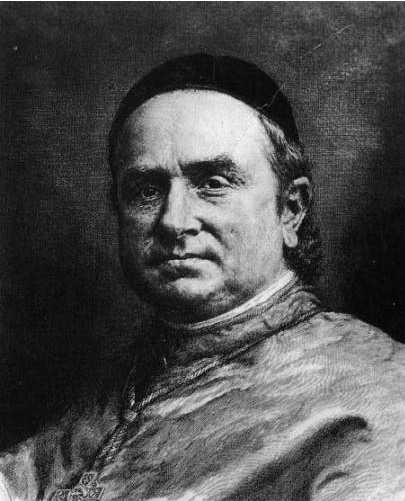
Then, just two years before the publication of Pope Gregory’s encyclical and only one year before Dom Guéranger first conceived of acquiring Solesmes and reviving the Order of St. Benedict in France, there took place in the chapel of the motherhouse of the Sisters of Charity in the rue du Bac in Paris the series of apparitions wherein Our Lady revealed to St. Catherine Laboure the design of the Miraculous Medal.
The first medal was struck in 1832.
In 1834, the year after Dom Guéranger and four companions moved into Solesmes, St. Peter Julian Eymard, Apostle of the Eucharist and founder of the Blessed Sacrament Fathers, was ordained to the priesthood. St. Peter Julian would be a retreatant at Solesmes in years to come.
So, on many occasions, would be a layman who can be described without exaggeration as the most influential one in Catholic France for much of the nineteenth century, thanks to the power of his pen.
This was Louis Veuillot, editor of the Catholic newspaper, L’Univers.
That he and St. Peter Julian retreated at Solesmes, that they knew Dom Guéranger and knew each other, illustrates a dimension of apostleship that is constant in every age: Men and women who work hard for the Lord are often not simply acquainted. They are frequently linked by the closest bonds of friendship.
There is nothing strange or mysterious about this. No one is going to spend much time laboring in a vineyard without coming to know those who work beside him.
Of course it is well known that “birds of a feather flock together,” but a peculiarity of apostolic Christians as compared, say, to a group of real estate agents, retired baseball players, or medical doctors, is the extent to which the affinity they have for one another extends to areas beyond that which first brings them together — in their case, the religion.
This affinity is underlined if we add to our little list of men and events the name of Louis Cardinal Pie.
Of all the men who championed in Nineteenth-Century France the rights of Our Lord as King of Society, none did it more brilliantly than he. His ordination to the priesthood took place in 1839, two short years after Gregory XVI named Solesmes the motherhouse of the Benedictine Order in France.
Ten years later, he became Bishop of Poitiers. He also became probably Dom Guéranger’s closest friend.
Thus it was that the Abbot of Solesmes would one day instruct his monks: “If some words have to be pronounced over my tomb, please consult the Bishop of Poitiers. No one knows me better.”
What we want to remark, by way of observing how the common interests of laborers in the vineyard of Our Lord often include matters other than the religion as such and to an extent that is not typical among men drawn together by a cause other than the Faith, is that, for example, most of the men and women we could name as being in the forefront of promoting the Faith in Nineteenth-Century France would have been united in their politics as well as by the religion.
Unlike most other groups of men, some of whom may be conservatives while others are liberal, they all held that politics — the means by which the life of a society is regulated or governed — should be Christian.
Accordingly, like Dom Guéranger, Cardinal Pie and Louis Veuillot, most would have supported the Count de Chambord, Legitimist pretender to the French throne, in the conviction that a monarchy under him and his successors was the likeliest way to ensure that the life of French society would again be Christian by law as well as custom.
Another who was of their company, which is to speak of another uncanonized but valiant laborer in the vineyard, was Fr. Emmanuel d’Alzon. Given no more than a paragraph in even the old Catholic Encyclopedia (“He was associated with Guéranger, Louis Veuillot, and other champions of the Catholic cause” and was “much esteemed by the Popes Gregory XVI and Pius IX”), Fr. d’Alzon is almost completely forgotten today.
The order he founded in 1843, the Assumptionist Fathers, is scarcely better remembered. They were once well known for their missionary work among Eastern … Orthodox.
The order’s original purposes were two: promoting the restoration in France of the Bourbon monarchy, and defending the sovereignty and independence of the Papal States, which defense was foundational to Ultramontanism.
It was also the Assumptionists who put Lourdes on the map as a place of pilgrimage, but not of the sort associated with that shrine today.
Today, pilgrims go to Lourdes looking for cures, and they do so from all over the world. What the Assumptionists conducted in the Nineteenth Century were national pilgrimages, demonstrations by thousands of men and women of their Catholicism and their patriotism, their love of the Faith and love of country.
One of the fruits of the national pilgrimages to Lourdes was the Association of Our Lady of Salvation. A body meant by the Assumptionists to bring members of France’s higher classes of society together with workingmen in a movement dedicated to prayer, penance and works of charity (including the care of Lourdes-bound invalids), the Association was a wonderful Catholic answer to the class warfare preached by Marxists.
Once again, all these undertakings were sprung from initiatives of Fr. Emmanuel d’Alzon. Like St. Peter Julian, he was ordained in 1834, the year after Dom Guéranger and his four companions moved into Solesmes.
We have wanted to speak of things that took place at or around the time of Solesmes’ beginning, things — like the life of the monks at the monastery — that would help enrich the life of the Faith in nineteenth-century France, and we have limited ourselves mainly to the ordination in the 1830s of certain notable clerics.
Clearly, other things happened, and not merely in the fourth decade of the century. Nor was everything that helped make Catholic France more Catholic than France had been in a long time associated even remotely with Solesmes.
For instance, for nearly forty years St. Catherine Laboure spoke to no one but her confessor about Our Lady appearing to her in the chapel in the rue du Bac.
The Miraculous Medal had become world famous, but no one knew of her involvement with it. She was tending chickens at her convent outside Paris, as far removed as can be imagined from the large religious and political developments of concern to a Cardinal Pie or Louis Veuillot.
However, there is no way of telling how very valuable her obscure labor may have been in the economy of Heaven, and how Heaven may have smiled on France because of it. (Another saint, one whose years came at the end of this era, would have much to say on this subject. We speak of the Little Way of the Little Flower.)
And what can have been more hidden from the world and thus of no consequence to it than the manuscript of True Devotion to Mary, by St. Louis de Montfort? It was discovered in 1842.
As important as the book would become in the spiritual lives of countless Catholics, could its discovery also have been a harbinger of what was to follow, to wit, Our Lady’s appearance at La Salette in 1846, her series of appearances at Lourdes in 1858, and her appearance again at Pontmain in 1871?
In speaking of these apparitions, we cannot forget the definition of the dogma of the Immaculate Conception in 1854. Was all this coincidental?
Was it coincidental, too, that all of it and so much more of which we could speak was taking place during the foundational years of Solesmes? Christians understand that there is no such thing as coincidence.
Of course, Dom Guéranger and the monks of Solesmes were also doing their part during these years.
That is, if persons and events outside Solesmes helped the monastery flourish by building up the life of the Faith in France, and if the Queen of Heaven herself had a role in that with her repeated appearances — appearances, first, in the France of the liberal Louis-Philippe, then in the France of another Bonaparte who called himself Emperor (Napoleon III), and then when the country was under Prussian occupation — the growing community of Benedictines at Solesmes was making its own contribution to the Church, and not simply the Church in France.
When Dom Guéranger died in 1875, Bl. Pope Pius IX marked his passing with a message (formally, a Papal Brief entitled Ecclesiasticis viris ) wherein he hailed the departed for the decisive influence of his work in the substitution of the Roman liturgy for the multiplicity of local rites that still prevailed in France when Solesmes first opened its doors, and for his contribution to preparing the way for the definition of the dogmas of the Immaculate Conception and papal infallibility.
In a separate, second Brief, Pio Nono paid tribute to Dom Guéranger as a monk — the monk, we may say, whose vision and labor revived monasticism in France and then, with Solesmes as the model, helped revive it elsewhere.
(The pope did not speak of it, but we can be grateful that part of the revival was the revival of authentic Gregorian Chant. Now that Our Lady of Fontgombault, a daughter house of Solesmes, has founded a daughter house of her own in the U.S., Americans have a special reason for feeling gratitude on this score. We may live far away, but it is consoling to think that the beautiful tones of real Gregorian Chant can now be heard in the Oklahoma night.)
To be sure, it was not merely through the achievements of Dom Guéranger that Solesmes was a help to the Church. It is never through the work of some one member that any monastic community makes its greatest contribution to the life of the Faith. The humblest monk in the house does that simply when he prays.
That is the main thing monks do, and the thing for which all the rest of us must be grateful. By spending their lives at prayer, they pick up the spiritual slack left by others who do not pray as they ought, or do not pray at all.
Guéranger’s Achievements
Still, it is with Dom Guéranger’s achievements that we are concerned, and in the space that remains to us we must consider specifically how he helped prepare the way for the definition of the two dogmas defined in the nineteenth century. Then we want to conclude, not by drawing a last parallel between the Church in Nineteenth-Century France and the Church today, but by noting a very great difference between then and now.
First of all, there may be readers who are disturbed by our saying that Dom Guéranger helped prepare the way for the definition of the dogmas of the Immaculate Conception and papal infallibility, as if the definitions might not be universally accepted by Catholics without preparation.
Such readers ignore that: 1) the Church never defines anything unless it is time to do so either because development of the teaching in question has reached the point that definition is required or because the teaching is not simply in question, but in doubt; and 2) both the Immaculate Conception and papal infallibility were widely doubted by the middle of the Nineteenth Century.
That is not to say either dogma was doubted by very many ordinary faithful. Serious doubt never begins with them, let alone heresy. It was among Churchmen that doubt was increasingly widespread. In regard to the Immaculate Conception, Cardinal Newman, for instance, wrote that the “case” (his word) of the Blessed Virgin Mary “is essentially the same as St. John the Baptist, save for a difference of six months.”
As for the dogma of papal infallibility, Cardinal Newman was also opposed to its definition — as was every American bishop at Vatican I, the ecumenical council that defined it.
Foreword for Monarchy by Roger Buck
Dom Guéranger helped prepare the way for these dogmas being defined mainly by the force of his pen. There were some other things he did, but mainly he produced two books, The Memoir on the Immaculate Conception, published in 1850, and (after so much delay) The Pontifical Monarchy, brought out in 1870.
His method of defending both dogmas was simplicity itself. He relied on the Church’s own belief in the teachings — i.e., on the authority of Tradition.
In the instance of the Immaculate Conception he showed from the Fathers and the Church’s own liturgy that Christians have always understood that the Mother of God never had any stain of sin.
As for The Pontifical Monarchy, its appearance could not have been more timely … because it showed that definition of the dogma of papal infallibility was justified by belief in it at that very time by ordinary Catholics …
As for why it happens that the point is ever reached when the Church defines, or ought to define, one or another of her teachings, Dom Guéranger had this to say in The Pontifical Monarchy:
The definition of a revealed dogma is one of the greatest benefits God can accord His Church. All of the truths which Jesus Christ taught are life and light, and their explicit declaration in the course of centuries each time brings to Christianity a new degree of strength and splendor.
The sentiment of faith must therefore cause the faithful to desire development of the Creed, in order to enter more and more into possession of the truth which the Son of God brought to earth.
The happiness of Heaven will consist in seeing the whole truth; the increasing richness of the Symbolum of revealed dogmas joins us ever closer to it here below.
Since we are speaking of Dom Guéranger’s writing, it wants to be recalled that early in this essay reference was made to The Liturgical Year as his masterpiece.
That said of it, how describe the work to anyone unfamiliar with it? It consists of fifteen volumes.
One or another can be taken to Mass and used as a Missal. However, the volumes also relate a history of the development of the Church’s liturgy.
They also offer commentary on parts of the liturgy. Finally (for many, most importantly and memorably), the lives of saints are recounted.
None of it could have been written, as all who have spent a year with the volumes will attest, except by a monk. For, as Cardinal Manning, the great English prelate once wrote, the volumes are
The fruit of the spirit of prayer and retreat proper to the Benedictines, like a prolonged meditation on the marvelous order of divine worship.
We have seen in this essay certain similarities between the Church in Nineteenth-Century France and the Church in most of ex-Christendom today, including the U.S.
Before we conclude, it ought to be observed that in at least one important respect there is no parallel between the situation of the Church today and the one that prevailed in Nineteenth-Century France.
That is, Catholicism that is usually called Traditional flourishes today and promises to continue to do so, but if we speak of the life of the Faith led by the great majority of Catholics in the mainstream of the Church, there has been no intensification of it such as was manifest in France all during the years that have concerned us here.
Indeed, the mainstream Catholic Church today closely resembles mainstream Protestantism. In some places, both “streams” already amount to scarcely more than a trickle, and it is becoming possible to imagine them ceasing to flow altogether, especially given the rate at which their adherents contracept and abort.
How account for ever-declining Mass attendance, all the nearly empty or closed seminaries, the negligibility of the Church as a force in society and everything else that makes mainstream Catholicism today different from, not similar to, the situation of the Faith in Nineteenth-Century France?
To be included in “everything else” is a difference that can only be inferred. If the life of the Faith is diminishing today instead of enjoying a new intensity, we must lack the kind of Catholics — apostolic Catholics — who abounded in Nineteenth-Century France and who made the Faith vibrant at that time in that country.
If that is so, we probably are not producing saints the way Nineteenth-Century France did, either.
A Painful Afterword
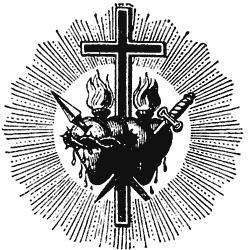
At this point, we painfully take leave of Mr. Potter. The concluding paragraphs of this excellent article have been deleted – although they can be found here.
Why is it painful for us? We need to explain. We feel so indebted to Gary Potter, for the rich light he sheds on Catholic France. It is hard indeed to find such worthy efforts in the English language!
Yes, so very, very much of what Potter writes seems so very important to us – including his closing thoughts that Catholics have lost the intensity of faith that produced the revival of Catholic France.
However, Potter proceeds further than that in those closing thoughts. He proceeds, in fact, in a Feeneyite direction and is, indeed, a subscriber to views of Feeney, which were condemned by Ven. Pius XII well before Vatican II.
But we are not Feeneyites at this website and could not mislead folk into thinking we were.
For similar reasons, small deletions were also made in the above—for example calling the Orthodox ‘schismatics’ and a reference to Hilaire Belloc which seems not entirely correct to us.
But it is, once again, painful to us to bowdlerise Potter’s sincere, heartfelt efforts like this.
We see why Gary Potter writes as he does: his heart aches no doubt seeing the enormous difference between Catholic vitality of the past and the flaccid indifference that reigns today.
Our own heart joins him in weeping that Catholicism is so limp, so indifferent today, compared to the pre-Vatican II era and the reader can still read Potter’s closing remarks at the above link – we simply cannot endorse them.
We pray that Gary Potter and the Slaves of the Immaculate Heart of Mary at the St. Benedict Center who gave us permission will understand our difference of opinion here. In terms of that permission from the St. Benedict Center, we note they write at their website:
Content on this site is licensed under the Creative Commons Attribution – Share Alike License.
What does this mean? All the material on our site is copy written, with some rights reserved. Except in those articles where the contrary is explicitly stated, we have a very liberal policy of sharing the intellectual property on our site. One right we do reserve is the right of “attribution.” If you use our materials, you must credit our site with a link, or, if the material is being used in print, with a reference to the source of the material (“source: Catholicism.org” would do nicely). Not to give attribution would be a violation of international copyright laws.
Another right we reserve is that your derived product (if you alter materials from our site) not only make attribution, but must also be licensed under a similar agreement. You may not use our material, alter it, and forbid others to use it. This is called “share alike.”
So as we understand it, we can reproduce Gary Potter’s piece with changes – and do so with heartfelt gratitude.
Our changes include not only the named cuts and subtitles, but also breaking down longer paragraphs and adding white space for easier reading from a computer monitor. We include links to our source. And we also forbid our derived product from being used in ways that abrogate the Creative Commons Attribution – Share Alike License. —RB
Foreword for Monarchy by Roger Buck
Buying Books at Amazon Through These Links Gives Us a Commission. This Supports Our Apostolate. Thank You if You Can Help Us Like This!
